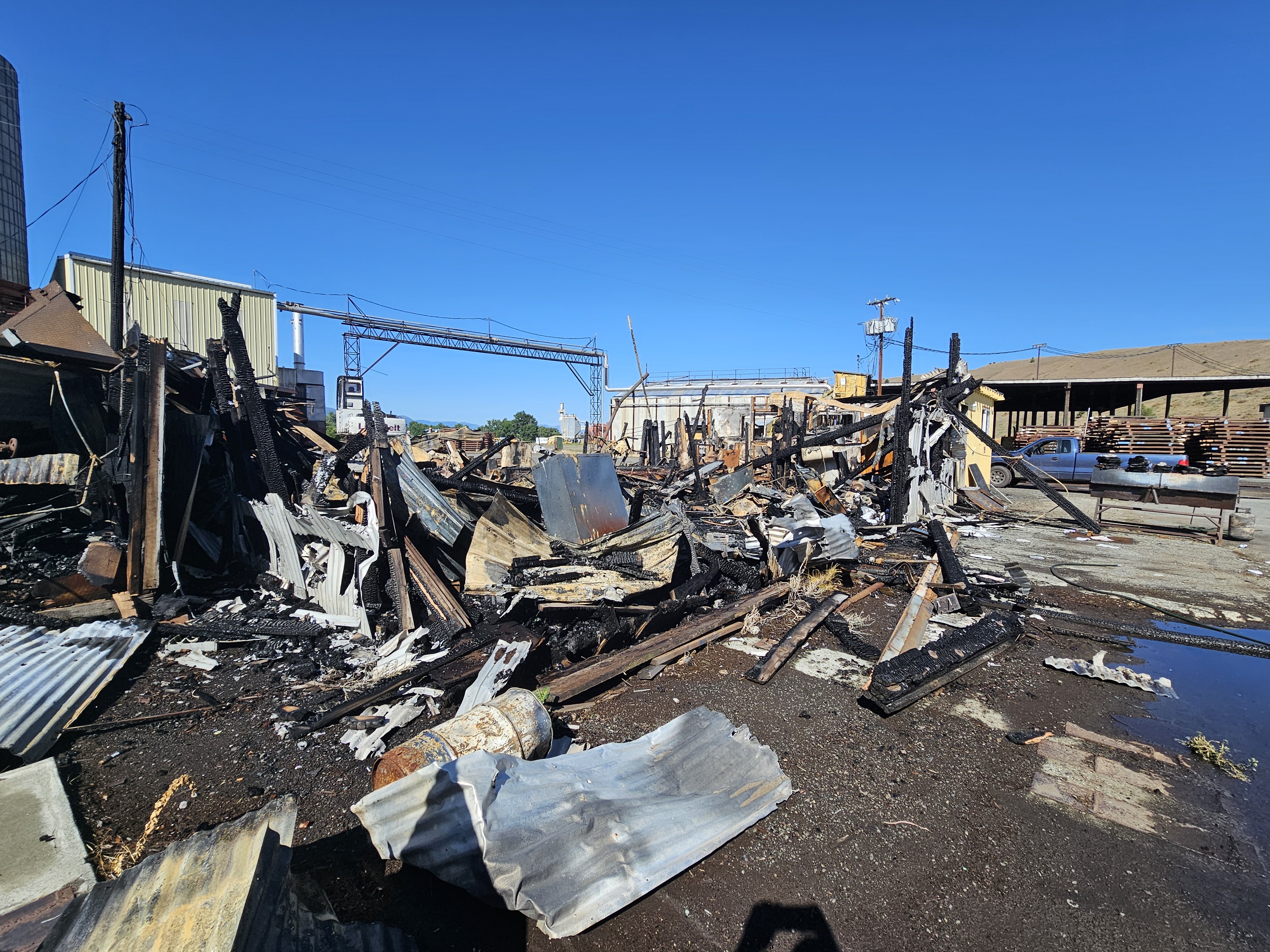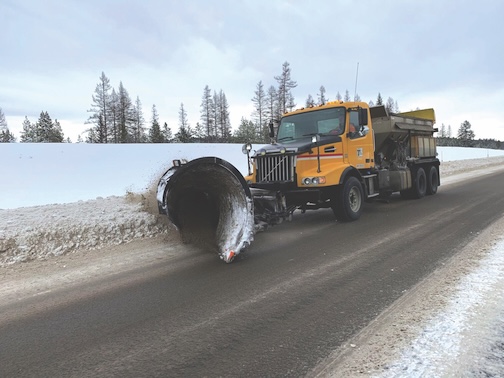An encounter with wolves leaves scars
Published 4:00 pm Tuesday, January 7, 2003
Guest opinion
Trending
Editor’s note: Following is the second half of a two-part article by J. Zane Walley, a writer from Lincoln, N.M. who is a frequent contributor to Range Magazine. He wrote: “With the renewed interest in wolves, I thought you folks might be interested. … I own the story and hereby formally relinquish all copyrights.” The first half of his story recounted a wolf attack on the Humphreys, a family camping in Arizona. The wolf attack resulted in injuries to the family dog, Buck.
The wolf attack and Buck’s brush with death had traumatized the family; even so, the investigator (from U.S. Fish and Wildlife Service) proceeded with his interrogation.
“He was undercover so we agreed not to disclose his name,” Richard Humphrey says. “I invited him inside the tent to sit at the table and told my story. An agent from Arizona Fish and Game, John Romero, had arrived and stayed away from the tent as if he didn’t want to hear it. I thought he might be on our side a little more than the federal agent so I called him over. He was very hesitant and took no notes.”
Trending
For six drawn-out weeks the questions and interrogations continued by telephone and in person. The nameless agent and his supervisor even brought the investigation to the Humphrey home. The inquisitors had an unwelcome surprise waiting. Alarmed, Richard had an attorney present and a video camera set up to record the meeting. “I could tell they didn’t like that! The supervisor played games with me; he played hard to trip me up,” Richard earnestly declares. “They had questions and information from a biologist who obviously knew nothing. They were concerned about the way the bullet went in and weren’t even sure if Buck had been attacked. I asked them if they had checked the dead wolf for dog bites. They had not even done that.”
Likely the supervisor was making sure he covered his own tracks, for the shooting had developed into a media spectacle, a push and shove soapbox melodrama between environmental activists and the FWS. Richard had accidentally become a political pawn and scapegoat. Facing prison and financial ruin, he was painfully aware of his jeopardous position.
Environmentalist groups were enraged that FWS did not prosecute Humphrey, and they took their views public with the help of willing and often inaccurate media. Richard and his family watched helplessly as a sly leak in FWS released inflammatory, slanted information, and green activists convicted him in a kangaroo court frenzy of newspaper and television interviews. “REAL MEN DON’T KILL WOLVES” charged a bumper sticker printed and supplied to the public by the Tucson-based Wildlife Damage Group. “Federal Wildlife officials are lying and covering up the truth about the killing. The whole so-called official account of this is a lie. I don’t believe any of it, not at all,” spokesperson Nancy Zierenberg angrily stated to the Tucson Citizen.
“We’ve got to make an example of this guy,” demanded Bobbie Holaday of Preserve Arizona’s Wolves. “There is no excuse. It is totally illegal.”
Before the facts in the shooting or even Humphrey’s name were released, the Southwest Center for Biological Diversity pressed a demand for indictment. In a series of interviews with the Tucson Citizen, their spokesman, Peter Galvin accused, “This whole thing has turned out to be a travesty. The fact they have failed to prosecute is just another indication that the U.S. government is not making wolf recovery a priority. We are now examining our legal options.”
Galvin threatened to charge FWS with “dereliction of duty” because they did not charge the killer. He further indicated they might seek legal action against the shooter. SWCBD used their web site, and perhaps the FWS leak, to further polarize the public by reporting, “The U.S. Fish and Wildlife Service continues to investigate the killing. They apparently do not believe the shooter’s story that the wolf attacked his dog. Even if the dog had been attacked, it would not legally or morally justify killing a severely endangered species. It is looking more and more like the killing was malicious, not just ignorant.”
During the whole outrage, Humphrey maintained his silence. He sought the advice of confidante, G. J. Sagi, publisher of Outdoor News and an experienced publicist. Sagi had known Humphrey for years. “My mom was homebound and paralyzed because of a stroke,” Sagi recalls. “She was in bad shape and dad had to stay with her constantly. They would go for days without seeing anyone except for their postman, Mr. Humphrey. He was concerned and would always drop in with a cheery word and check on them when he delivered the mail. I knew what kind of man I was helping.”
Sagi and the Humphreys worked out a plan to counter the negative publicity and inaccurate articles. Humphrey wanted a chance to tell the true story. He and his family are deeply religious and felt a blight on their name would be intolerable. The antagonistic forces Humphrey was between had a lengthy chronicle of clashes. Environmental activists had virtually litigated the U.S. Department of the Interior into the March-April 1998 release, ignoring the objections of those citizens who would be affected. New Mexico Governor Gary E. Johnson vehemently opposed the release, bluntly saying it was based on an “absence of credible information and should not be endorsed by this office.” The New Mexico Cattle Growers Association, along with eight other livestock organizations in New Mexico and Arizona, sued in late March 1998 against the release of the wolves. Scant days following the filing of the suit, wolves were covertly released with no public notice.
The vacationing Humphrey family had no hint of the release controversy’s magnitude when they inadvertently became the focal point. They did not even know they were in a wolf release area. “It was late afternoon when we arrived and began setting up camp,” Richard recounts. “There was nothing posted. I had heard about the release program, but all publicity indicated it was far to the north in a wilderness area.”
They had no way of knowing that the release pens, where wolves were being fed road-kill twice per week by FWS, were not more than a mile from their camp. FWS had guaranteed in public meetings that “Notice of general wolf locations will be publicized.” If they had followed through with their pledges to the public, the Humphreys’ calamitous situation would not have occurred. “Had there been signs identifying the area as a wolf release site,” Richard acknowledges, “we would have never camped there!”
After spending years and almost $3 million on the wolf release program, why would FWS release dangerous predators so close to civilization and a major highway without posting warnings? Why would they choose an area traveled by large numbers of tourists where camping was common? One reason is that FWS contends that wolves aren’t dangerous. Their official line is, “There are no documented cases of wolves attacking and killing or severely injuring people in North America.”
One wonders how much actual research went into that statement. Recently documented attacks by wolves on humans were available in several newspapers and in historical documents at the very time FWS made their doubtful statement. …
Six grinding, nervous weeks after the shooting, the nightmare was finally over for the father and husband who simply defended his family. He was informed no charges would be filed.
Richard now resolutely believes the wolf release is dangerous and wrong. He is humble, but serious, when he says, “We didn’t have to go public, but wanted to tell people about our experience, and hope and pray it will prevent this from happening to others.”
Helen, the lady of few but earnest words, is straightforward in expressing her feelings. “We feel that both the wolf and our family are victims. They put out a potentially dangerous animal – an animal that is not afraid of man, which was fed by man, and put too close to man. There were no warnings that wolves were in the area. The vets say our dog will never fully recover; and I’m just thankful it wasn’t my children who were injured. The wolf did go after my husband, daughters, and me. My husband had no choice. He was protecting us. I hope that what happened to us never happens to anyone else.”
J. Zane Walley, a writer from Lincoln, N.M., offered the following postnote: “I wanted to really feel what the Humphrey family felt when a wolf rushed at them, so I called my neighbor who has a hybrid wolf and asked if I could get in the pen. He let me. The wolf was on a long chain and promptly charged me. The fear that involuntarily ran through my veins was instantaneous and left me weak. When I interviewed Kieran Suckling, loyal champion of the wolf-release program and director of the Southwest Center for Biological Diversity, he stated that regardless of circumstances, Mr. Humphrey should be indicted. I recounted my ‘Wolf Pen’ interview and sincerely extended Mr. Suckling the same opportunity, adding, ‘Without the chain, of course.’ Oddly I thought, for a person who believes harmony with beasts is protection from them, he sure declined in a hurry. Meeting the Humphrey family was a pleasure. They seem to have retained what so much of America has lost, a loving relationship with each other. Buck is mending slowly. After nine weeks his leg is still in a full-length splint, but Buck’s courage and devotion to the family is undaunted. When I visited the Humphrey home, old Buck, Buck the Brave, painfully and unwaveringly hobbled between the children and me. The defiant, vigilant look on his scarred, gray face said it all.”









